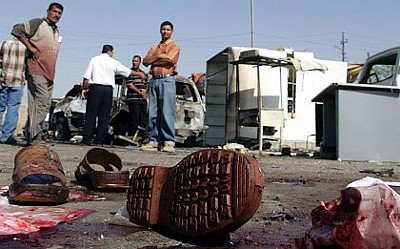City of Death: The battle for Baghdad

Once the most progressive city in the Arab world, Baghdad has been ravaged by war and bombings. Everyone wants out, but not everyone can afford to leave -- and car bomb explosions are a daily fact of life.
From an altitude of 15,000 feet, it's just a pale patch on the landscape, a soft and amorphous silhouette, exposed on every flank. It has no protective features: no city wall, no shoreline, no hill from which a fortress might rise. Its edges peter out like the threads of a frayed rug, the sandy brown of houses merging seamlessly with the green of Mesopotamia's meadows. Falluja is visible to the west, Baqubah to the northeast.
Once the fertile fields surrounding Baghdad overflowed with melons, dates and grapes - a rich bounty for the city. Nowadays they ooze death onto the capital's streets. Terrorism and insurgency have taken root in the fields and palm groves between Abu Ghraib and Baghdad International Airport in the western part of the city. Even military pilots dare not approach normally, while civilian planes remain at cruising altitude before dipping into a last-minute descent towards the runway. Only a very narrow strip of airspace is considered secure.
Iraqis arriving from Cairo, Amman or Dubai book the window seats on the left. For good reason. It's the best place to endure the hair-raising nose-dive towards terra firma: keeping your eyes glued to the horizon helps stave off the nausea. In a maneuver known as "the corkscrew," the pilot banks the plane steeply to the left. Fifteen minutes and several thousand feet later, the aircraft finally levels off and prepares to land: conversation stops as the centrifugal forces hit passengers in the stomach. The downward spiral into Baghdad seems to last an eternity.
Read the rest at Der Spiegel

<< Home